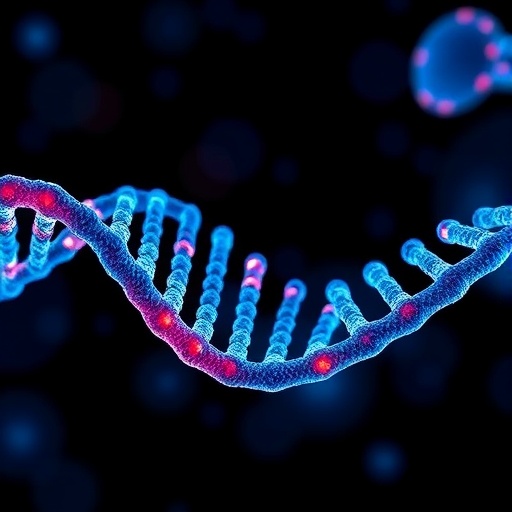In a groundbreaking study published in Reproductive Sciences, researchers have unveiled the potential protective effects of soybean isoflavones against testicular damage caused by exposure to zinc oxide nanoparticles (ZnONPs) in male mice. This research highlights the urgent need to understand the impact of nanomaterials on reproductive health, a subject that has gained significant attention due to the rise of nanotechnology in various industries.
Zinc oxide nanoparticles, known for their antibacterial and UV-filtering properties, are widely used in cosmetics, food additives, and even pharmaceuticals. However, their increasing prevalence raises concerns over their safety and effects on human health. As products containing ZnONPs become more commonplace, further investigation into their biological implications is essential, particularly regarding their effects on male reproductive systems.
The scientists involved in this study meticulously designed experiments to explore how ZnONPs affect testicular health. They administered varying concentrations of these nanoparticles to male mice and subsequently examined the animals for signs of oxidative stress, inflammation, and cellular damage within the testes. The results revealed severe pathological alterations, raising alarms about the potential long-term consequences of zinc oxide exposure.
To assess the protective role of soybean isoflavones, the research team incorporated these compounds into the diets of some of the experimental subjects. Soybean isoflavones are plant-derived compounds with estrogen-like properties, known for their antioxidant capabilities. Previous studies have indicated that these isoflavones might counteract oxidative stress and promote overall reproductive health, making them a prime candidate for further exploration in this context.
The outcomes of the administration of soybean isoflavones were promising. Mice that received these compounds exhibited a notable reduction in testicular damage caused by the nanoparticles. Histological analyses of the testes showed improved morphology, indicating that soybean isoflavones may act as a protective agent, promoting recovery and reducing the negative impact of ZnONPs on the reproductive system.
These findings could have far-reaching implications, especially considering the increasing use of nanomaterials in consumer products. As awareness grows around the safety of these particles, this research provides crucial insights into how natural compounds like soybean isoflavones can be harnessed to mitigate potential risks associated with environmental exposure to nanoparticles.
The researchers emphasized the importance of understanding the mechanism behind the protective effects of soybean isoflavones. They theorize that these compounds may bolster antioxidant defenses within the testes, helping to neutralize harmful free radicals generated by oxidative stress induced by ZnONPs. This protective action could play a vital role in preserving testosterone synthesis and overall male fertility.
As more studies are conducted, the hope is that soybean isoflavones and similar natural compounds can be developed into dietary strategies or supplements that could safeguard reproductive health in populations at risk of exposure to nanomaterials. It highlights the inherent synergy between modern science and traditional dietary practices, as natural compounds long revered in various cultures find their way into contemporary health discussions.
Additionally, this research complements a growing body of literature that scrutinizes the role of nutrition in reproductive health. More studies are increasingly focusing on how diet influences not just general health but also specific reproductive outcomes. As individuals become more aware of how their diet affects their health, findings like these provide substantial evidence for incorporating certain foods into lifestyles for better reproductive health.
In conclusion, this study stands as a beacon for future research, potentially guiding the development of preventive measures against reproductive toxicity posed by environmental pollutants. The protective effect of soybean isoflavones on the adverse impacts of ZnONPs is an exciting frontier that warrants further investigation. As our understanding expands, we may unlock new dietary strategies that enhance not only male reproductive health but overall well-being.
The implications of this study stretch beyond laboratory settings and touch on public health implications as well. Policymakers may need to reconsider regulations regarding the use of nanoparticles in consumer products, especially those used by sensitive populations, such as men of reproductive age. Additionally, there is a palpable need for public education on the potential risks associated with emerging materials and the benefits of dietary interventions.
This compelling research sets the stage for more comprehensive studies exploring the intersections of nanotoxicology and nutritional science, broadening our understanding of environmental health risks in relation to dietary micronutrients. The significance of such work is underscored by the constantly evolving landscape of material science and its interactions with biological systems, emphasizing the need for a protective approach that prioritizes human health.
As we delve deeper into the microcosm of cellular interactions impacted by nanoparticles, this study shows the potential of plant-based solutions to combat these challenges, highlighting the importance of ancient wisdom in modern scientific inquiry. The future of reproductive health might very well rely on the revival and integration of such natural compounds into everyday diets, advocating for a holistic approach to health that champions both science and nature.
In summary, this pivotal research sheds light on the possible protective mechanisms of soybean isoflavones against ZnONP-induced damage, urging further exploration of natural dietary components in mitigating health risks posed by environmental contaminants. The implications extend beyond individual well-being, resonating through public health discussions and influencing future research directions in reproductive health, nutrition, and materials science.
Subject of Research: Protective effect of soybean isoflavones on testicular damage induced by zinc oxide nanoparticles
Article Title: Protective Effect of Soybean Isoflavone (SI) on Testicular Damages Induced by Zinc Oxide Nanoparticles (ZnONPs) in Male Mice
Article References:
He, H., Wang, K., Jin, Y. et al. Protective Effect of Soybean Isoflavone (SI) on Testicular Damages Induced by Zinc Oxide Nanoparticles (ZnONPs) in Male Mice. Reprod. Sci. (2025). https://doi.org/10.1007/s43032-025-01981-w
Image Credits: AI Generated
DOI:
Keywords: Soybean isoflavones, zinc oxide nanoparticles, testicular damage, reproductive health, oxidative stress.
Tags: dietary influences on testicular damageinflammation and cellular damage in testesmale reproductive health researchnanomaterials and reproductive healthnanoparticle exposure effectsoxidative stress in testesprotective effects of isoflavonesreproductive health implications of ZnONPssafety concerns over zinc oxidesoybean isoflavones benefitstesticular health and nanotechnologyzinc oxide nanoparticles toxicity





